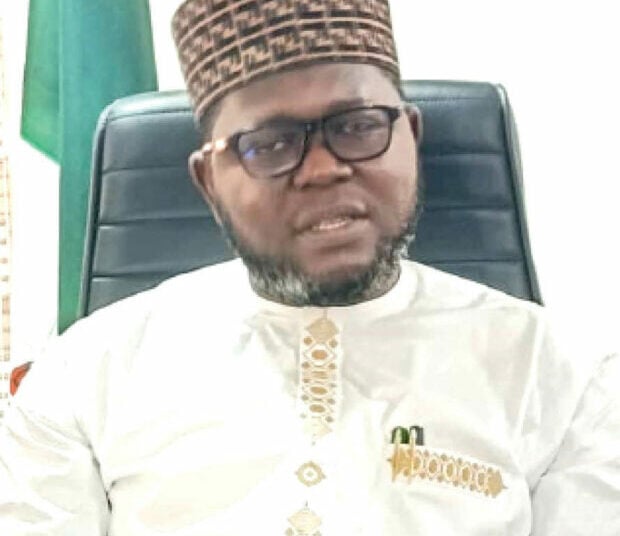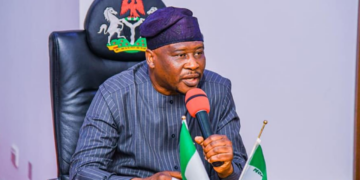How would you describe the state of primary healthcare in Nasarawa when you assumed duty and how has it changed?
The situation was average, but Nasarawa State is now a top performer in various national health indicators at the primary level, including immunization, infrastructure and human resources. This is not just because I am an appointee; I genuinely believe that if every state governor emulated the governor’s commitment to PHC, Nigeria’s first level of care would be transformed.
We have 147 wards in the state, and the national goal is to have a functional PHC in each. This is critical because if your ward has a revitalised center, you can feel secure accessing care there, especially in emergencies.
Through a collaboration with the World Bank, along with state and federal governments, we are revitalising 58 facilities across 58 wards. Most are finished, and the remainder will be completed within two months. Furthermore, Governor Abdullahi Sule has approved the revitalisation of nine additional facilities using state funds. UNICEF will revitalize nine more, and the National Primary Care Development Agency is funding six through constituency projects.
Regarding human resources, the Governor approved the recruitment of 1,856 indigenes before my tenure, and another 681 since I arrived. This is a significant achievement. You cannot have revitalised infrastructure without staff and equipment. The governor has also taken a personal lead by visiting PHC facilities every quarter, which is a national guideline for leadership, and he has approved the procurement of necessary equipment for all revitalised centers.
What is the level of usage of services at these primary healthcare centers by community members?
We have a Department of Social Mobilisation and Health Education with staff in every local government and ward. Their work has been instrumental. If you visit any primary health center, like the one on Wamba Road in Akwanga, you will see high patronage.
This acceptance can be measured by what we call the “Six A’s” of primary healthcare: Availability of infrastructure, human resources, and equipment; affordability for the people; acceptability to the community; accessibility for all; accountability from the staff managing the facility and appropriateness of the care provided. Our centers are meeting these criteria, which is why communities are using them.
What vision did you bring to this role when you were appointed?
First, I thank Almighty Allah for the opportunity to serve the people of Nasarawa State. I was appointed by His Excellency, Engineer Abdullahi Sule on October 2, 2024 and assumed duty on October 9, 2024. My vision is rooted in the fundamental principles of primary healthcare which were redefined as an essential first level of contact at the Alma-Ata Conference in 1978. Since a large portion of our population resides in grassroots communities, a strong PHC system is the foundation for better secondary and tertiary healthcare. My goal is to ensure that every ward in Nasarawa State has a functional and revitalised primary health center, as per national guidelines.
Our agency operates under a law initially created in 2009 and re-enacted in January 2021, which changed the chief executive’s title from executive chairman to executive secretary. Guided by this law and international standards from the WHO, we are focused on achieving all components of primary healthcare, originally eight, now including oral and mental health.
This involves ensuring that health infrastructure is well-located and equipped, and that human resources are distributed equitably. “Equitable” is key; it considers factors like population size. You cannot place the same level of facility in a community of 50,000 as you would in one of 10,000. This determines whether a community gets a Level 1, 2, or 3 primary care center. Crucially, a facility is useless without skilled staff. I must thank His Excellency for his support in recruiting 681 Nasarawa indigenes from our health colleges into the agency just two months ago.
What is the impact of collaboration with development partners if any, to improve the system?
These partnerships are vital. For example, last month we were in Abuja to meet with a partner called T-Africa, which will support the state in addressing sexual violence and unwanted pregnancy. We have provided them office space and will sign a formal MOU in early October. They will employ local staff, ensuring co-financing and co-implementation. Another key partner is the World Bank-funded IMPACT project, which began in 2020 and runs until 2025. They support us in revitalization, human resources, nutrition, and supervision. We also work with ARIN (another World Bank project focused on nutrition), SocioCapital, and the Society for Family Health (SFH). His Excellency’s recent visit to the World Bank was strategic; it was to appreciate their support and seek further collaboration. The World Bank Country Director even noted that Nasarawa is their “state of choice.”
What is your dream for primary healthcare in Nasarawa State?
My wish and prayer are to ensure that before my tenure ends, all our primary healthcare centers operate according to international standards. We have taken significant steps through revitaliation, massive recruitment, and strong partnerships. In Sha Allah, with the continued support of the people and government, we will achieve our goal of being the best in Nigeria.
What major challenges you have faced so far?
Challenges are part of any endeavor. When I arrived, we had over 700 primary health facilities that needed to be made fully functional. The main challenge is scaling this revitalization and ensuring quality across all centers. However, by






